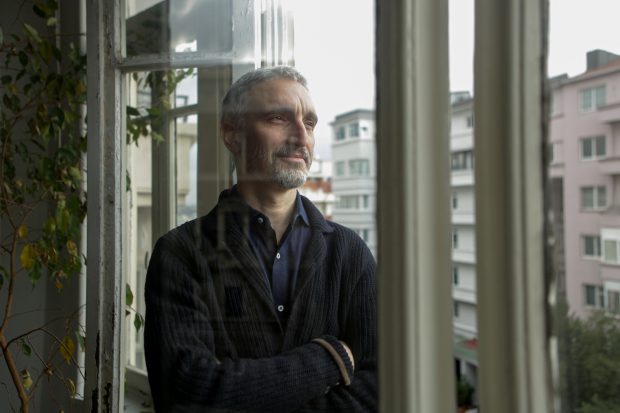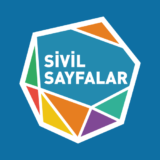“We Don’t See Where The Children Are When We Look Into The City”

Bernard Van Leer Foundation's Turkey Representative Yiğit Aksakoğlu explained the Istanbul95 project initiated under the leadership of the foundation. The project aims to look at Istanbul from the height of a healthy child at the age of 3 which is 95 centimeters as well as to carry out child and parent supporting programs and plans for the city.
The foundation generates new answers and solutions by asking the architects, city planners, public officials and mayors the question of “What would you do differently if you saw the city from a height of 95 centimeters?”
The Bernard Van Leer Foundation, founded in 1960, is a Dutch-based foundation. After seeing the devastating effect of World War II, its founder Bernard Van Leer decided to donate his company to the foundation in order to invest in children and make a contribution to the world so that such a war does not happen again. The foundation, which has been operating in nearly fifty countries until 2000, has been also providing financial and technical support to various studies since 94.
2016-2020 Strategy of the Foundation: KENT95
While the cities are designed according to the needs of adults, children are ignored. Kent95 project sets out with the question of what would you do differently if you looked at the city from 95 centimeters which is the height of a healthy 3 year old child, and produces solutions. Turkey Representative of the Foundation Aksakoğlu explains the Project as: ‘Kent95 has 4 fields of study. We started with a study in Istanbul through these 4 fields. We called the first study as Istanbul95. We have completed 2 years in Istanbul with our collaborations. Now, we have gone beyond Istanbul95 and started to work with Izmir and Gaziantep Metropolitan Municipalities.”
“We Don’t See Where The Children Are When We Look Into The City”
Stating that the first of the works carried out within the scope of Istanbul95 project is to produce data-based decision-making tools, Aksaoğlu expresses the work done in this field and what they do as: “When we look at the city, we do not see where the children are. We started with the question of where could the disadvantaged children in a city of 15 million like Istanbul be? According to TÜİK data, there are 1.2 million children in the 0-4 age group only in Istanbul. Every year, 230,000 babies are born only in Istanbul. This means more than 630 babies per day. We worked with TESEV and Kadir Has University’s Istanbul Studies Center to see where these children are, especially the disadvantaged ones, at where they live within the city. In order to find out where the disadvantaged children are, we have determined the fair prices, meaning square meter prices. Price per square meters for neighborhoods was derived from the square meter prices per streets.
Therewith, we retrieved the age group data from TURKSTAT and marked the places where the 0-4 age group is more concentrated on the map. Thus, we were able to show the answer to the question of where the disadvantaged children are by looking at all their neighborhoods throughout Istanbul. There are 39 districts in Istanbul and the services of these districts for children and their parents are progressing in an unorganized way. To map this, TESEV went and collected this data from the district municipalities. Thus, we became able to see all of them on istanbul.kent95.org website.
Thus, when the questions such as where are the parks, the nurseries are and which neighborhoods the cash aids go, intersected with the previous maps, the answer to the question of whether the services or aids go to the right places was also revealed.”
“The Method That Is Valid In The World Is House-Visit Based Family Guidance”
Emphasizing the importance of early childhood, Aksakoğlu states that support is provided not only to children but also to parents within the scope of the Istanbul95 project, and continues as follows: “We were together with Boğaziçi University in this study area. There is a very effective intervention method in the world, which is house visit based family guidance. This model includes identifying the disadvantaged family in general and sending a family guide that will support them during pregnancy until the baby’s 3 years of age. Boğaziçi University developed this program and has adapted to Turkey. They also included information on maternal depression and nutrition which were missing in it. The program has started to provide support on issues such as nutrition, depression, and child development until the child reaches 3 years of age from the last 3 months of pregnancy.”
Expressing that they are working with 4 district municipalities in Istanbul, Aksakoğlu stated that they have acted in these districts by building a team of 4 people each. Saying that the municipalities of Beyoğlu, Maltepe, Sultanbeyli and Sarıyer have become the working areas of the Istanbul95 project, Aksakoğlu continued as follows: “The teams formed by the municipalities were first sent to Boğaziçi University for training. Later, they returned to the field and included pregnant mothers in the areas they found on the maps to the programs. The program has now completed its second year. The babies included in the program are now 2 years old. Currently, a municipal employee can reach a maximum of 40 families. We are trying to increase this number so that the people can benefit more from the family guidance program.”
“Playgrounds Are Not Convenient For 0-3 Year Old Children And Their Parents”
The areas where children spend good time are more limited in cities. This situation is worse for 0-3 years old children. Because the playgrounds are not designed for this age group and their parents. Aksakoğlu explains that they are working on this within the scope of the project:
The third study we have carried out within the scope of Istanbul95 project is the arrangement of green and public spaces for 0-3 years old children and their parents. Unfortunately, the areas called playgrounds are not convenient for 0-3 years olds and their parents. Plastic slides and swings are places where children after the age of 5 would be able to play at the earliest. We worked with Superpool Architecture Company to arrange both the green and public spaces for 0-3 years old and their parents. According to the developmental stages of the child, Superpool has developed an idea guide that explains what kind of needs they have in open spaces in the first 3 years. We are talking about children here, we should not think of them independently of their families. Parents also need attention to their needs in open areas. If the mother is also comfortable, she takes her child to that park more often. When she goes there, she stays in the park longer. Therefore, based on this idea, Superpool designed pilot parks and municipalities implemented them in these four districts. Two of them were opened. One is about to finish, and the other will be completed in the first three months of 2020. Beyond that, it is possible to make not only parks but also public spaces convenient for 0-3 years. We also implemented an application called a mobile playground. One of the things kids love to play is cardboard boxes. They can transform these boxes into various things in line with their imagination in the mobile playground. Even taking a cardboard box somewhere can actually turn it into a playground.”
“Men Over Middle Age Without Disabilities Design Cities For Individuals Similar To Themselves”
Stating that their last working areas within the scope of the Istanbul95 project are urban mobility, Aksakoğlu says there are no regulations for young children and their families in the cities. Aksakoğlu touches on the following regarding this issue: “Men over middle age without disabilities design cities for individuals similar to themselves. Considering the basic things like how long it takes to get to cross a little kid over or how much cars pay attention to this, we tried to find solutions in urban mobility. Working with another international NGO, we tried the first example at Maltepe Zümrütevler. We removed cars and garbage containers in an occupied public space and transformed it into a city square. If those who live there adopt this practice, the square will be permanent and similar practices will become popular by implementing them not only in Maltepe but also in other places.”
Stating that there is a lot of work for local governments to do, Aksakoğlu says, “They are not much long-term and large investments, there are many short-term things to be done immediately.” Aksakoğlu says that in order to do these works, it is necessary to look at the children from their heights but not from above and that looking at the city they govern from the angle of children would be enough.

Bizi Takip Edin